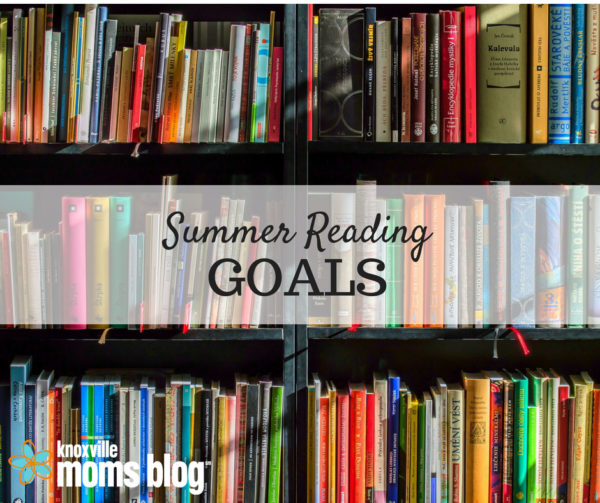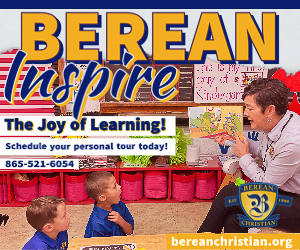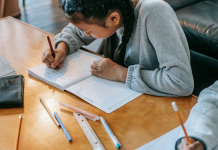Summer is here! We’ve made it, friends! And while many of us look forward to this sweet time of family togetherness when school gets out, there are just as many of us searching for ways to keep our kids academically engaged this summer. I have an M.Ed in Reading Education, and I have worked as an elementary school reading specialist.
I’ve got a few tips for helping your kids keep their reading skills sharp, no matter what age or stage of reading they are in.
Beginners:
Alphabet books are a great way to help early learners memorize their letters and figure out what sound each letter makes. It’s the first step to becoming a reader, so it’s important to choose the right kind of alphabet book! We have been given any and every alphabet book for my two boys, and let me tell you, they are not all the same. If you are trying to help your child build those early phonics skills, here are a couple of things to look for in an alphabet book:
- Are the example words age-appropriate? “C is for Chrysanthemum” may be beautifully illustrated, but “C is for Cat” (while simple) is probably more developmentally appropriate for your little one.
- Can you clearly hear the sound of the letter in the beginning of each example word? For instance, “T is for Train” isn’t a great example because of that “tr” blend at the beginning of the word. Most kids will think the word “train” starts with a “ch” based on the sound they hear. Any other word (“turtle,” “tie,” or “taco”) where that beginning sound can be clearly heard would be preferred.
- “X” is a tricky one. I tend to immediately flip to the “x” page and judge the whole book on how they handle it. “X is for xylophone” just doesn’t cut it for me, because it teaches kids that “x” makes the “zzz” sound. Better to teach “x” as an ending sound, where it is typically found in most English words, such as “X is for Fox.” You’ll want to reinforce the idea that “x” makes the “cks” sound at the end of the word.
After you and your child get really familiar with a particular alphabet book, try quizzing them (with the book closed) on what “a” is for, what “b” is for, etc. Once they’ve mastered that, try coming up with entire lists of words that start with a certain letter. You could do this as you’re driving in your car or walking through the grocery store (“Look! ‘B’ is for berries. ‘B’ is for banana”).
Early Readers:
I am all about using silly poetry and Dr. Seuss with early readers. Traditional nursery rhymes, Shel Silverstein, and even the Gingerbread Man series by Laura Murray make excellent use of rhyme and rhythm, while also providing opportunities for your child to learn new vocabulary words.
I’ll confess that I used to think that Dr. Seuss was just repetitive and annoying. It wasn’t until I went to grad school that I learned the history behind why he started writing and the enormity of the feat that he accomplished in stories like Cat in the Hat and Green Eggs and Ham. He sat down with Dolch and Fry’s list of sight words (words that are common in reading but can’t be “sounded out”) and set out to make entire stories using almost exclusively those words, making them more readable for beginners. As if that wasn’t challenge enough, he also created his stories with a set rhythm (generally writing in different forms of tetrameter) and rhyme scheme. His books were a huge upgrade from the boring Dick and Jane primers of his day.
- Reading Dr. Seuss and other poetry books at our house always leads us to creating our own rhymes and songs. Helping your child learn how to recognize and manipulate rhyme is another important phonics skill that leads to better reading.
- Of course, you don’t want to get so caught up in word play that you miss the story entirely. If you’re looking for great stories, gravitate towards books with accolades and medals awarded by the American Library Association. Each year, the ALA recognizes authors who have made significant contributions to children’s literature, and the list often includes quite a bit of cultural diversity. It can be a great way to open a door to discuss experiences and people who are different. The books sent out in Dolly’s Imagination Library are also great about including a discussion guide to assist parents in asking questions and helping their children comprehend and reflect on the stories they’re reading. Once you complete a few of those discussion guides with your kids, you will likely be prepared to adapt the same type of questioning to other books as well! Discussing what you’ve read about in literature and applying those situations to real life is another important step in becoming not just a good reader, but also a critical thinker.
Adolescent Readers:
My children are far from being adolescent, but I am currently a high school English teacher, so I still feel like I have a fair bit of experience with adolescent readers. Adolescents have a LOT of required reading that they deal with throughout the school year — classic literature, science textbooks, and historical documents. Most high school students also have required summer reading, which can seem overwhelming during a time of the year that is supposed to be free and independent.
I fought really hard to change my school’s summer reading list to allow the students to have more choice over what they read and to provide a wider range of genres and options. I felt strongly that young adult books should be included on the summer reading list and even a selection of graphic novels. There may not be much you can do to change the summer reading selection at your school, but here are some things that you can control:
- Some students comprehend better when they can listen to a book being read as they’re reading it. Try downloading your summer reading on Audible and allowing your child to listen on their earbuds.
- Use a study companion for more difficult, classic titles. Sparknotes and Shmoop are great tools when used alongside the full-length text (not instead of it!).
- Incorporate graphic novels whenever possible. Some parents shy away from graphic novels because they don’t consider them “real” reading, but they absolutely are! They are certainly more visual than traditional texts, but that doesn’t mean that they aren’t capable of tackling deep topics and conveying meaning in a multimodal format. There is a bunch of classic novels that have been adapted into graphic novels, and while I wouldn’t suggest reading them in place of the original (because some material may have been abridged), they would make great side-by-side companions. There are also a bunch of excellent original titles that are becoming classics in their own right and may already be included on your summer reading list (or they will be soon).




















